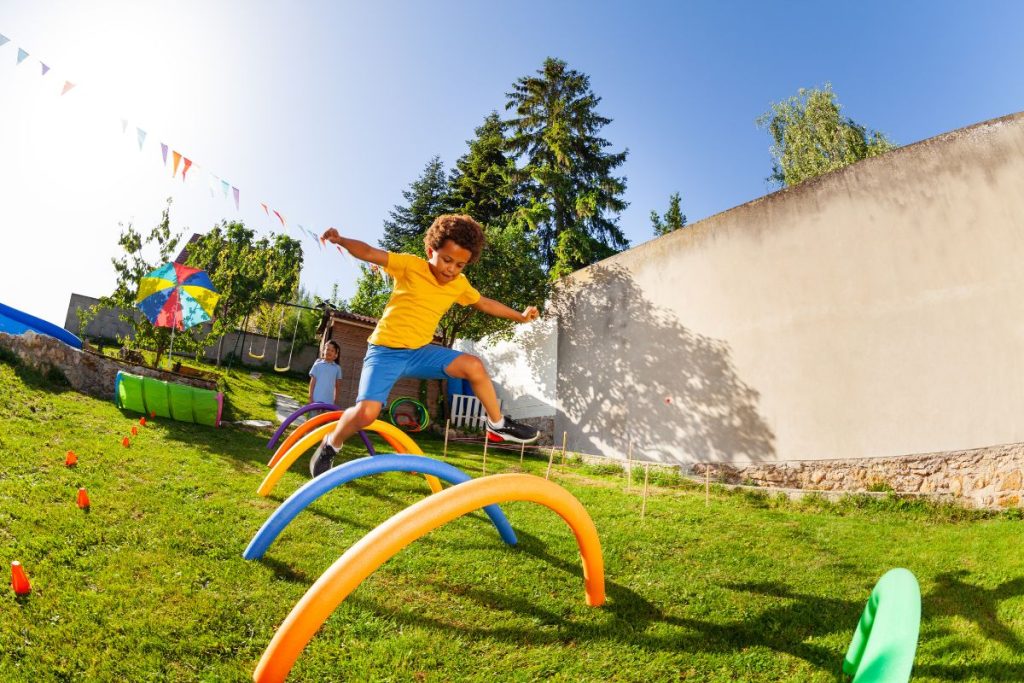As parents, we always want the best for our little ones. One question that often comes to mind is, “how much playtime does a 5-year-old really need?” With their seemingly endless energy and insatiable curiosity, figuring out the right balance can be a bit of a challenge. This guide aims to shed some light on this topic, helping you to ensure that your child gets the right amount of playtime for their development and well-being.
How Much Playtime Does A 5 Year Old Need?
According to the guidelines provided by the American Academy of Pediatrics (AAP), it is recommended that children strive to engage in at least one hour of moderate to vigorous physical activity each day. For a five-year-old, this can encompass enjoyable activities such as taking a brisk stroll in the park or participating in a lively game of tag within the confines of their backyard.
Guidelines and Recommendations

As parents, understanding the importance of playtime, especially for a 5-year-old, is critical. To assist in this, reputable organizations like the American Academy of Pediatrics (AAP) provide insightful guidelines for daily physical activity for children.
American Academy of Pediatrics Recommendations
According to AAP, children should engage in at least an hour of moderate to vigorous physical activity every day. For a 5-year-old, this could mean anything from a brisk walk in the park to a fun game of tag in the backyard.
This recommendation doesn’t mean your child needs to do an hour of continuous exercise. This could be divided throughout the day. For example, a 15-minute bicycle ride in the morning, followed by some active games in the afternoon, and a walk in the evening would adequately meet this requirement.
Remember, the goal isn’t about working out—it’s about playing. The activities should be enjoyable and varied to keep your child motivated and interested.
Holistic Benefits of Play
Playtime isn’t just about physical activity. It also plays a significant role in the cognitive and emotional development of a 5-year-old. Through play, children learn to understand the world around them, develop their language skills, and learn to manage their feelings. For instance, simple games like ‘pretend play’ can help children express their emotions and enrich their imagination.
Therefore, it’s crucial to balance playtime and rest, providing your child with ample opportunities for active play while also ensuring they get sufficient rest. In the end, remember that all children are unique, and their needs can differ—so these guidelines should serve as a guide rather than a strict rule.
Recommended playtime for a 5-year-old
Free Play:
- Duration: 1-2 hours per day
- Description: Allow your 5-year-old unstructured playtime where they can explore, use their imagination, and engage in activities they enjoy. This could include playing with toys, drawing, building, and other creative endeavors.
Structured Play and Physical Activity:

- Duration: At least 60 minutes per day
- Description: Encourage activities that involve moderate to vigorous physical activity, such as running, jumping, climbing, and playing sports. This can contribute to the development of motor skills and overall physical health.
Social Play:
- Duration: Regular opportunities for social interaction
- Description: Support your child in participating in playdates, group activities, and team games. Social play is crucial for the development of social skills, cooperation, and building friendships.
Quiet Time and Relaxation:

- Duration: 30-60 minutes per day
- Description: Provide time for quieter activities, such as reading, drawing, or listening to music. This helps children unwind and develop focus and concentration skills.
Outdoor Play:

- Duration: Whenever possible
- Description: Whenever weather permits, encourage outdoor play. Outdoor activities offer diverse sensory experiences and contribute to physical and emotional well-being.
It’s important to note that these are general guidelines, and individual needs may vary. Pay attention to your child’s cues – if they seem engaged and happy during play, and their overall development is on track, you’re likely providing an appropriate amount of playtime.
Individual Variations in Playtime Needs
Understanding that every child is unique is central to providing the best care and activity schedule for them. As such, the playtime needs of a 5-year-old can vary based on several factors including their energy level, interests, and overall development.
Observing Your Child’s Cues

Observing your child’s cues can provide valuable insights into how much playtime they require. Watch for signs of boredom or restlessness – these could be indicators that your child might benefit from more active play. On the other hand, signs of frustration or fatigue might suggest that they need more quiet time or relaxation. For example, if your child is consistently losing interest in structured activities after 45 minutes, it might be beneficial to break these activities into shorter, more manageable chunks.
Balancing Activity and Rest
It’s crucial to balance active play with periods of rest. Ensuring your child has ample downtime is as important as encouraging physical activity. These moments allow your child to recharge, process their experiences, and prepare for the next bout of activity. For instance, following a vigorous game of tag with a quiet activity such as reading can provide a much-needed rest period.
Adapting Playtime to Individual Needs

Remember, these guidelines are just that—guidelines. Feel free to adapt them according to your child’s individual needs. For instance, if your child particularly enjoys painting, you might extend their free play period to allow more time for this activity. Or if your child is especially active, you might increase the time allocated for structured physical activity.
In conclusion, the key to determining how much playtime a 5-year-old needs is to observe, adapt, and maintain a flexible approach, always prioritizing your child’s happiness, health, and overall development.
The Quality vs. Quantity of Play
While understanding the amount of playtime a 5-year-old needs is crucial, it’s also important to emphasize the quality of play over quantity. A child might be engaging in play for several hours, but it may not be beneficial if the activities are not stimulating or enjoyable for them.
Stimulate Creativity Through Play
For instance, a child who spends hours mindlessly watching television is not receiving the same benefits as a child who spends the same amount of time engaged in pretend play, building blocks, or drawing. The latter activities stimulate creativity, problem-solving skills, and cognitive development, thus providing a richer quality of play.
Nurturing a Supportive Environment for Play

A supportive environment that fosters creativity and exploration also significantly enhances the quality of play. By providing a safe and nurturing space, children are more likely to engage in meaningful play.
Role of Parents in Play
For example, as a parent, you might set up a small corner in your living room with various art supplies, books, and toys that cater to your child’s interests. This encourages your child to explore and engage in activities that they enjoy, which can make playtime more meaningful and fun.
Encouraging Exploration in Play
You can also regularly introduce new materials or toys that challenge your child and stimulate their curiosity. For example, if your child enjoys building blocks, you might introduce a more complex set that challenges their problem-solving skills.
In conclusion, while ensuring your 5-year-old has enough playtime is essential, it’s equally important to focus on the quality of play and provide a supportive environment that encourages creativity and exploration. By doing so, you can ensure that playtime is an enriching and enjoyable experience for your child that contributes to their holistic development.
